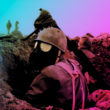Producing new bioweapons isn’t easy
By Pal Aas, March 12, 2008
"The Body's Own Bioweapons" is an informative and well-balanced presentation of the possible threats posed by mid-spectrum agents, such as bioactive molecules derived from the human body.
Security experts and members of the arms control community identify bioterrorism and the production of bioweapons on a small and large scale as one of the most challenging threats to national and international security. There are reasons to argue against such statements.
First of all, the development and production of bioweapons is a difficult and sophisticated task. It is not an exercise in which individual terrorists will engage but is more likely the terrain of states or industries with a high-level of scientific and technological knowledge. The steps–production, dissemination, aerosolization, spray-drying, microencapsulation, etc.–necessary to weaponize large volumes of materials are complex. If terrorist organizations developed these capabilities it would be a serious challenge.
In particular, the development of lethal agents or agents that impair brain function, emotion, or cognition constitutes a serious threat to individuals. However, Tucker hits on an important point when referencing examples of what Soviet scientists achieved on this front during the Cold War. They were all frightening examples of possible threats from large state bioweapons programs. Thus, the international community should be making more efforts to force signatory states and nonsignatory states to ratify the Chemical Weapons Convention (CWC) and the Biological and Toxin Weapons Convention (BWC). In addition, states should negotiate a verification protocol for the BWC. Increased commercial interest in bioregulators and the rapid development of production technologies have additional implications for these treaties.
In addition, the various interpretations of the term "law-enforcement" in the CWC are problematic. If states accept a broad interpretation of the law-enforcement exemption in the CWC, they should specify and limit the types and production-volumes of agents. Furthermore, necessary verification measures should be introduced that cover the "law enforcement" use of "bio-chemicals." These points should be addressed at the upcoming CWC review conference.
It will be difficult to change the CWC or amend its lists of chemicals, so other options must be considered. I agree with Jonathan Tucker’s idea of modifying the provisions in the CWC Verification Annex that cover "other chemical production facilities." This approach would increase the international control of the production of such possible threat agents.
More generally, the next biothreat could be chemicals derived from the human body, but this would take time. In the wide spectrum of biochemical agents available as terrorist weapons, other agents are probably of greater interest today and during the next decade. In my opinion, conventional explosives will continue to be the primary weapon for most terrorist groups. The next option will probably be classical chemical warfare and/or biological warfare agents and radiological agents. Toxic industrial chemicals are another possible and realistic alternative, as these chemicals are easily available.
Topics: Biosecurity
Share: [addthis tool="addthis_inline_share_toolbox"]














